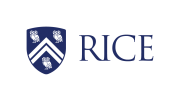The online simulations of work in physics on this page will allow you to discover in a practical way this important concept of classical mechanics, also called mechanical work or simply work. We will discover what is work in physics, what is its calculation formula, the relationship between work and energy and finally its importance and applications.
Concept of work in physics
Work in phiscis is a fundamental concept that refers to the transfer of energy from one object to another by applying a force over a distance.
Calculation of work in physics. Force and distance
Work is calculated by multiplying the magnitude of the applied force by the distance over which it is applied. Mathematically, work (W) is defined as the scalar product of the force (F) applied and the distance (d) made by the object in the direction of the force.
The formula for work in physics is as follows:
W = F * d * cos(θ)
where θ is the angle between the force and displacement vectors.
Therefore, work is a scalar quantity that, depending on the value of the angle θ, can be positive or negative. Its unit of measurement in the International System is the joule (J).
Work and energy
Work and energy are deeply interrelated in physics, since work done on an object causes a change in its energy. When a force is applied over a distance and work is done, the energy of the object can be transformed, either by increasing its kinetic energy, its potential energy, or both. This principle highlights how work acts as the link that allows energy to be transferred between systems, making it an essential concept for understanding conservation laws and dynamic processes in nature.
Importance and applications of work in physics
The importance of work in physics lies in the fact that it is an essential concept essential for understanding the principles that govern the behavior of physical systems and the transfer of energy. This principle not only explains how objects interact through forces, but is also key in practical applications such as machine design, structural engineering and motion analysis in biomechanics. From the construction of skyscrapers to the development of advanced medical devices, the working concept optimizes resources and predicts outcomes, making it a fundamental pillar of applied physics and modern technology.
Explore the exciting STEM world with our free, online simulations and accompanying companion courses! With them you'll be able to experience and learn hands-on. Take this opportunity to immerse yourself in virtual experiences while advancing your education - awaken your scientific curiosity and discover all that the STEM world has to offer!
- Force
- Lift
Work of a force
In the first of our simulations of work in physics, we examine the work done by a force applied on a block. Pull the block and observe on the graph the work done as it moves.
Lift a mass
Lift a mass by pulling it. Observe the difference in work done when it is lifted gently and when it is lifted roughly, can you explain?
- Force
- Drag
Work of a force
This simulation examines how much work a force applied to a block does. Click on the block and see how much work is done. What happens to the work done if the angle of application of the force is changed? Can you explain?
Drag the block
Pull the block and observe on the graph the work done as it moves.
Giants of science
“If I have seen further, it is by standing on the shoulders of giants”
Isaac Newton

Galileo Galilei
–

Isaac Newton
–
Become a giant


Mechanics, Part 2



Mechanics, Part 1



Dynamics and Control



AP® Physics 1 – Part 2: Rotational Motion



Circuits for Beginners



Pre-University Physics



AP® Physics 1: Challenging Concepts




























